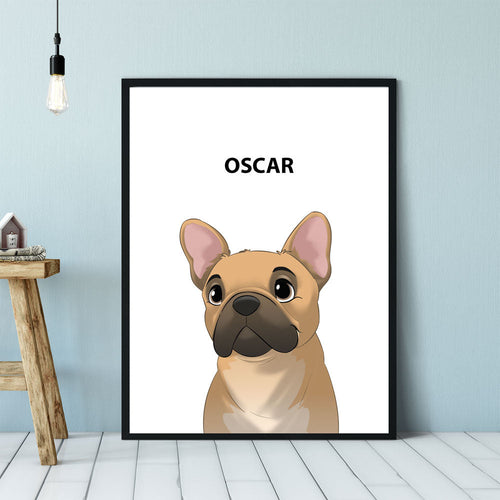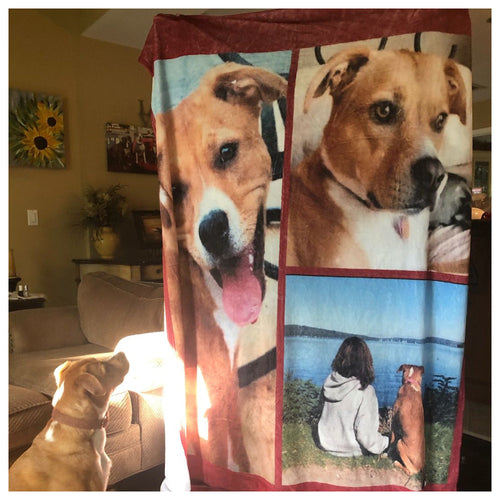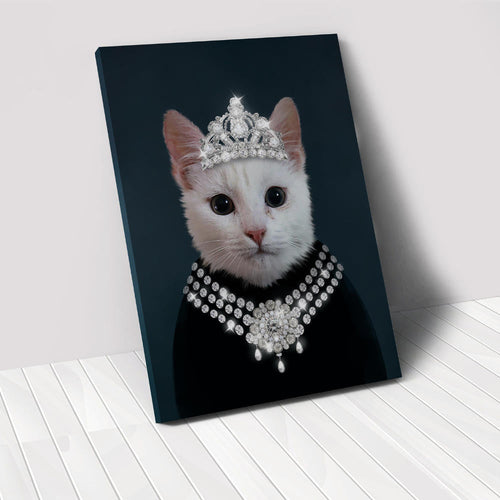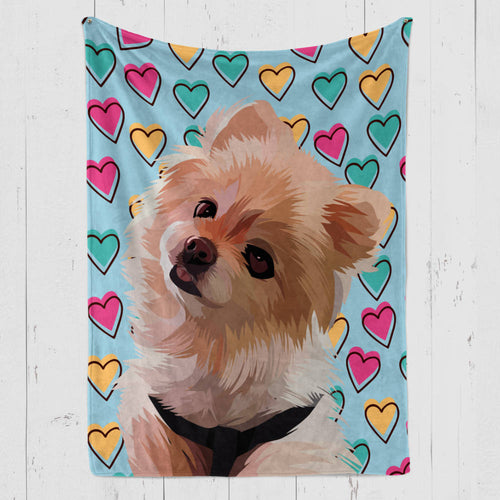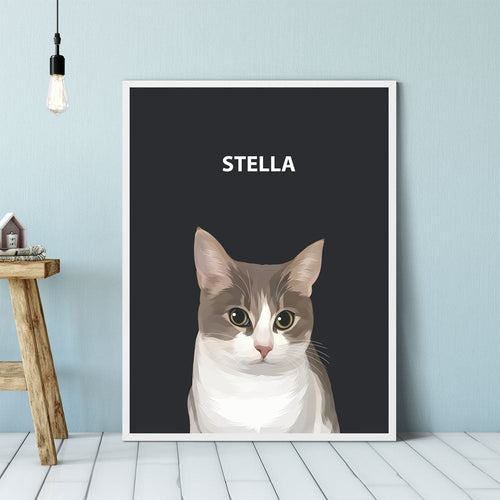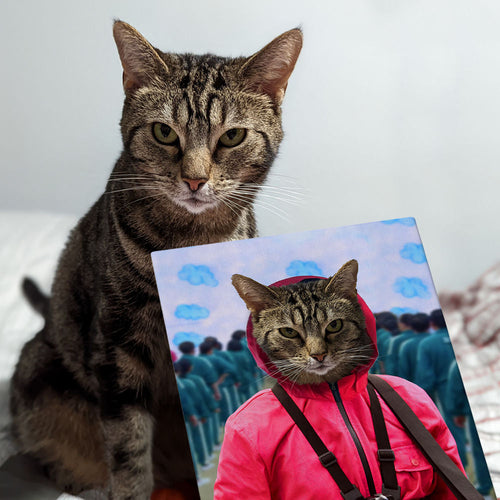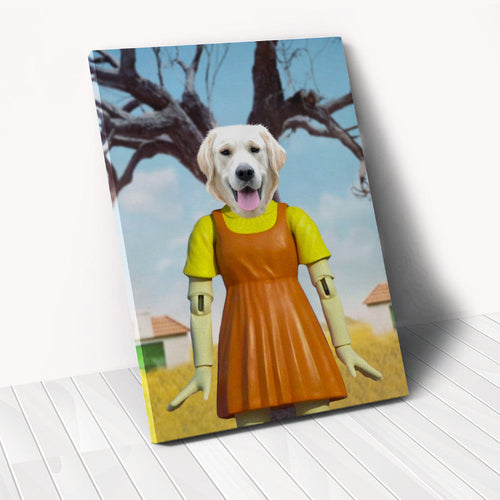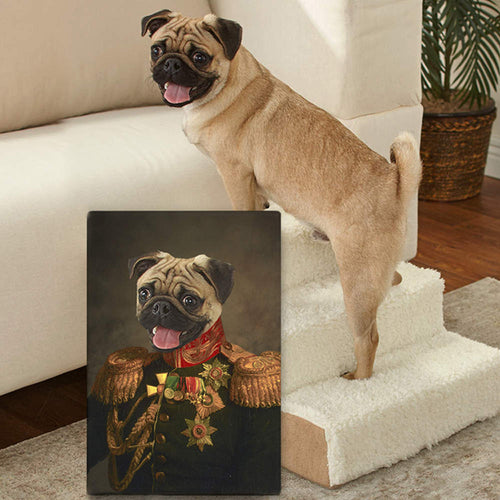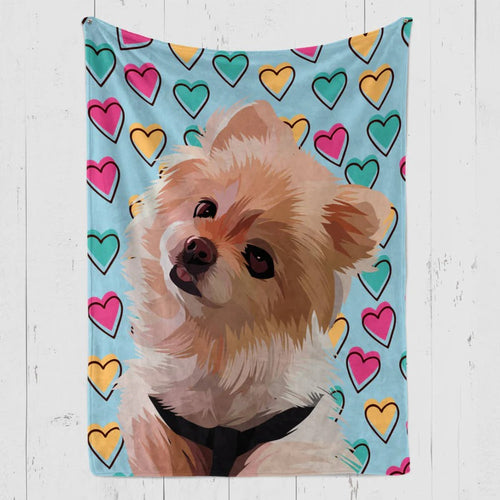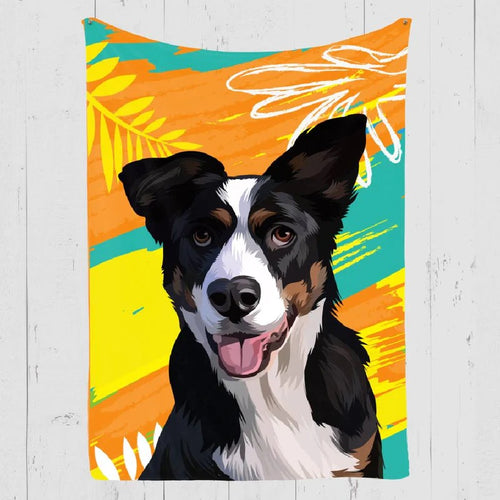
Are you a new dog owner and struggling with the challenges of house training them? Do not worry as our guide on house training a dog will help you out. We understand the journey to a well-behaved pet can be challenging. In this guide, we will shed light on the importance of house training and provide easy-to-follow techniques to ensure your dog behaves well at home.
Importance of House Training a Dog
Many dogs or puppies, which you adopt from shelters or find on the streets, are not properly trained to use the bathroom at home. They may end up soiling their kennel areas making it harder for you to keep a clean and comfortable living environment for both your pet and your household.
Furthermore, when these dogs come to their new homes, the smells and scents of other pets might make them want to mark their territory with urine at first. It is important to remember that you and your new dog need some time to understand each other’s signals and routines. Therefore, it is important to start house training your dog after bringing them into your home.
Observation and Supervision During House Training a Dog

Housetraining a puppy involves applying consistency, patience, and positive reinforcement to establish good habits and nurture a loving bond with your pet. Observing and supervising during the house training process is crucial.
A puppy usually takes 4-6 months to be a fully house-trained dog, though it might extend to a year. The size of dogs plays an important role here. Smaller breeds have tinier bladders and faster metabolisms, necessitating more frequent outdoor trips. The puppy's previous living conditions also influence their training. Breaking old habits to establish better ones might be necessary.
You can supervise your dog for house training in the following ways:
- Always monitor your puppy closely to prevent any accidents inside the house.
- Attach a six-foot leash to your puppy or nearby furniture when not actively engaged in training or playtime.
- Be attentive to signs like barking, scratching at doors, squatting, restlessness, sniffing, or circling, indicating your puppy needs to go outside.
- Upon recognizing these signs, promptly take your puppy to their designated bathroom spot outdoors using the leash.
- If your puppy goes potty or urinates in the right spot, praise them and offer a treat for their good behavior.
- Keep your puppy on a leash even in the yard during the house training phase, treating it like any other indoor area.
- Allow your puppy to roam inside the house and yard freely once they have successfully mastered house training.
During training, setbacks are normal. As long as you consistently observe and supervise them, you can guide your puppy through the house training process effectively.
Common Problems Related to House Training a Dog
Here is a list of some common problems you might face while house training a dog:
Dog Keeps Messing the Den
If your dog soils their living area, it might be because you kept them there for too long or the area is too big. Take your dog to their bathroom spot more often or make their living space smaller.
Drinks Too Much Water
Some dogs drink a lot of water out of boredom or habit, making them urinate frequently. If this is the case, limit their water intake, take them to their bathroom spot more often, and give them things to do so that they are not bored.
Introducing the Den
If you do not properly introduce your dog to their den, they might feel trapped and anxious, resulting in behaviors like barking, chewing, or whining. Ensure your dog feels comfortable and happy in her den.
Continual Accidents
If your dog keeps having accidents, promptly take her to the vet to rule out any medical reasons, like a bladder infection or intestinal issues.
Consistent Diet
It is best to feed your dog a consistent diet of high-quality dry dog food. Avoid giving her human food scraps or changing her food brand frequently. If you need to change brands, mix a bit of the new food with the old gradually over a week.
Understanding Dog Nature
Understanding your dog's natural tendencies and needs is fundamental to successful house training. Whining, circling, sniffing, and barking, or if your puppy is unconfined, scratching at the door, all indicate their need to go for potty. So take them out immediately.
Importance of Creating a House Training Schedule for Your Pup
Creating a house training schedule for your puppy involves establishing a routine for their bathroom breaks and ensuring they are trained to discharge in appropriate places. Here is a routine to potty train a dog ensuring their bathroom needs are met consistently and effectively:
1. Designate Specific Break Times
Determine the times during the day when your puppy needs to be taken out for bathroom breaks. Typically, puppies need to be eliminated after meals, playtime, naps, and waking up in the morning or from a nap.
2. Immediate Reinforcement
Praise your dog and give a treat each time they eliminate outside, immediately after they finish. This prompt reinforcement is crucial for them to understand the desired behavior.
3. Communicate with a Caretaker
If you cannot be present, arrange for a responsible caretaker, such as a neighbor or a professional pet sitter, to come and let the puppy out according to the designated break times. Ensure they understand the schedule and the importance of consistency.
4. Use Indoor Elimination Options
If it is not possible to have someone take your puppy outside, consider using an indoor elimination option, like pet pee pads, newspapers, or a designated sod box. Set up a confined area where your puppy can access the elimination spot easily.
5. Train Using the Designated Area
Train your puppy to use the designated indoor elimination area by consistently placing them there during scheduled break times. Use specific phrases like "go potty" to associate with the act of elimination.
6. Reinforce with Scent
If accidents happen outside the designated area, clean up the mess and place the soiled rags or paper towels in the designated area. This helps your puppy recognize the scented area as the appropriate spot for elimination.
7. Monitor Progress and Adjust the Schedule
Regularly monitor your puppy's progress and adjust the schedule and frequency of breaks based on their age, breed, and elimination habits. Be flexible in making changes to the schedule to meet your puppy's evolving needs.
8. Set a Feeding Schedule
Feed your dog on a consistent schedule, once or twice a day, to regulate their elimination patterns, promoting regularity.
Furthermore, utilizing a crate is also a beneficial approach for house training a puppy, especially in the short term. It allows you to monitor them for signs indicating the need to go and teaches them to hold it until you open the crate and let them outside.
Follow these guidelines when using a crate for house training your puppy:
- Ensure the crate is adequately sized, allowing the puppy to stand, turn around, and lie down comfortably, without providing enough space for them to designate a corner for elimination.
- When using the crate for more than two hours at a time, ensure the puppy has access to fresh water, preferably through a dispenser attached to the crate.
- If you are unable to be at home during the house training phase, arrange for someone else to give the puppy a break in the middle of the day, especially during the initial 8 months.
- Avoid using a crate if your puppy is eliminating inside it. This behavior could indicate several issues, such as habits from their previous living conditions, inadequate outside time, an overly large crate, or the puppy being too young to control their eliminations.
In conclusion, successfully house training your dog is essential for creating a clean and harmonious living environment for both you and your dog. By following these guidelines and being patient and consistent in your efforts, you can guide your dog toward becoming a well-behaved and house-trained pet.
Frequently Asked Questions:
When shall I begin house training my puppy?
You can begin house training a dog or puppy right away after bringing them to your home. Select the designated toileting area and the exit door to the elimination spot while considering your desired adult habits for your dog.
How will I know when my puppy needs to relieve itself before it does so?
Many puppies usually exhibit signs such as pausing activity, sniffing, and circling before eliminating. While other puppies may display restlessness and agitation when their bladder or bowels are full.
What are the main objectives of house training?
The main goals of housetraining a puppy are to teach them to go to the designated elimination area, respond promptly when asked to eliminate, and communicate their need to go. Additionally, it is important for them to be able to eliminate whether on or off leash and in the presence of people.
What to do if I see my puppy making mistakes and eliminating in the house?
If you catch your puppy eliminating indoors, interrupt them by clapping your hands, or whistling. Take your puppy to the appropriate area and praise them once they have finished.
When should I start giving my puppy more freedom in the house?
Once you see your puppy going for elimination continuously for 8 to 12 weeks without making any mistakes, you can give them more freedom.
How often should my puppy be taken outside for potty?
You should take your puppy outside regularly, at least every two hours, and right after they wake up, play, eat, or drink. This ensures they have ample opportunities to go potty in the appropriate area.
What steps should I take if my dog has an accident inside the house?
It is normal to have accidents inside your home as a part of house training. You can immediately take them to their outside elimination spot or else you can also try putting your dog in another area of the house.
What is the way of rewarding a dog for doing potty outside?
You can praise them, give them a treat or a favorite toy as a reward for doing potty outside.
What to do when it's bad weather and my dog refuses to go outside?
If your dog refuses to go outside in bad weather, try to make the outdoor experience more appealing and comfortable for them. Use positive reinforcement, provide shelter or cover and gradually introduce them to different weather conditions to help them become more accustomed and willing to go outside even in unfavorable weather.
How long does the potty training phase usually take for puppies?
Potty training a puppy typically takes around four to six months for them to become consistently reliable. However, this duration can vary based on their size, age, and how quickly they pick up new skills.
Reference Links:
- https://www.humanesociety.org/resources/how-potty-train-your-dog-or-puppy
- https://www.rspca.org.uk/adviceandwelfare/pets/dogs/training/toilettraining
- https://www.akc.org/expert-advice/training/how-to-potty-train-a-puppy/
- https://www.akc.org/expert-advice/training/how-to-potty-train-a-puppy/
- https://www.petmd.com/dog/general-health/how-to-potty-train-your-dog
- https://vcahospitals.com/know-your-pet/house-training-your-puppy
- https://be.chewy.com/how-to-potty-train-your-dog-in-7-days/
- https://www.paws.org/resources/re-housetraining-your-adult-dog/
- https://www.webmd.com/pets/dogs/house-training-your-puppy
- https://www.dailypaws.com/dogs-puppies/dog-training/basic/how-to-potty-train-an-older-dog
- https://www.brown.edu/Research/Colwill_Lab/CBP/Housetraining.htm
Latest Review on Woof Blankets
To have such a masterpiece by my side every day is a gift for me and my memories with Rex. Thank you WoofBlankets for such an opportunity to recreate his image on a blanket.Lara o’ Miguel US, California
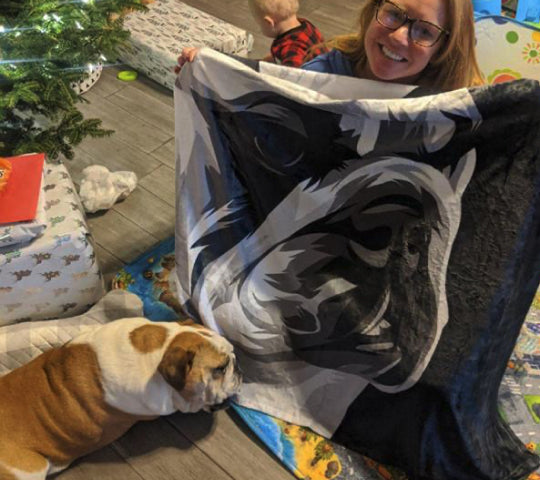
COLLECTION WORTH EVERY PENNY
BEST SELLERS
-
Woofy Single Color Custom Pet Blanket
![Woofy Single Custom Pet Blanket – Woof Blanket]()
- -41%
BlanketsSHOP NOW- Regular price
- from $64.95
- Sale price
- from $64.95
- Regular price
-
$109.95 - Unit price
- per
Sold out -
Exclusive Christmas Custom Pet Blanket
![Exclusive Custom Pet Blanket]()
- -39%
BlanketsSHOP NOW- Regular price
- from $69.95
- Sale price
- from $69.95
- Regular price
-
$114.95 - Unit price
- per
Sold out -
Christmas Custom Pet Blanket
![Christmas Custom Pet Blanket - Custom Dog Blankets]()
- -40%
BlanketsSHOP NOW- Regular price
- from $69.95
- Sale price
- from $69.95
- Regular price
-
$115.95 - Unit price
- per
Sold out -
Watercolor Pet Portraits
![]() SHOP NOW
SHOP NOW- Regular price
- from $59.95
- Sale price
- from $59.95
- Regular price
-
- Unit price
- per
Sold out -
Woofy Christmas Custom Dog Blanket
![Woofy Christmas Custom Dog Blanket]()
- -39%
BlanketsSHOP NOW- Regular price
- from $69.95
- Sale price
- from $69.95
- Regular price
-
$114.95 - Unit price
- per
Sold out -
Modern Pet Owner Portrait
![]()
- -32%
CanvasSHOP NOW- Regular price
- from $84.95
- Sale price
- from $84.95
- Regular price
-
$124.95 - Unit price
- per
Sold out -
Woof Splash Custom Pet Blanket
![Woof Splash Custom Pet Blanket]()
- -39%
BlanketsSHOP NOW- Regular price
- from $69.95
- Sale price
- from $69.95
- Regular price
-
$114.95 - Unit price
- per
Sold out -
The Admiral - Custom Pet Portrait
![The Admiral - Custom Pet Portrait Online]()
- NEW
- -25%
CanvasSHOP NOW- Regular price
- from $59.95
- Sale price
- from $59.95
- Regular price
-
$79.95 - Unit price
- per
Sold out -
Wings of Loyalty - Custom Pet Portrait
![]()
- NEW
CanvasSHOP NOW- Regular price
- from $59.95
- Sale price
- from $59.95
- Regular price
-
- Unit price
- per
Sold out -
Pet Memorial Custom Photo Collage Blanket
![Personalized pet memorial quilt with photos]()
- -41%
BlanketsSHOP NOW- Regular price
- from $64.95
- Sale price
- from $64.95
- Regular price
-
$109.95 - Unit price
- per
Sold out -
Celestial Paws - Custom Pet Portrait
![]() CanvasSHOP NOW
CanvasSHOP NOW- Regular price
- from $59.95
- Sale price
- from $59.95
- Regular price
-
- Unit price
- per
Sold out -
The Loyal Soul - Custom Pet Portrait
![]()
- NEW
SHOP NOW- Regular price
- from $59.95
- Sale price
- from $59.95
- Regular price
-
- Unit price
- per
Sold out -
Cartoonized Pet Portraits (New)
![Cartoonized Pet Custom Portraits Online]()
- -36%
SHOP NOW- Regular price
- from $59.95
- Sale price
- from $59.95
- Regular price
-
$93.95 - Unit price
- per
Sold out -
The French Sailor - Custom Pet Portrait
![]()
- -25%
CanvasSHOP NOW- Regular price
- from $59.95
- Sale price
- from $59.95
- Regular price
-
$79.95 - Unit price
- per
Sold out -
The Policeman - Custom Pet Portrait
![]()
- NEW
- -25%
CanvasSHOP NOW- Regular price
- from $59.95
- Sale price
- from $59.95
- Regular price
-
$79.95 - Unit price
- per
Sold out -
The General - Custom Pet Portrait
![]()
- NEW
- -25%
CanvasSHOP NOW- Regular price
- from $59.95
- Sale price
- from $59.95
- Regular price
-
$79.95 - Unit price
- per
Sold out -
Woof Love Custom Pet Blanket
![Woof Love Custom Pet Blanket]()
- -39%
BlanketsSHOP NOW- Regular price
- from $69.95
- Sale price
- from $69.95
- Regular price
-
$114.95 - Unit price
- per
Sold out -
Summer Time Custom Pet Blanket
![Summer Time Custom Pet Blanket]()
- -39%
BlanketsSHOP NOW- Regular price
- from $69.95
- Sale price
- from $69.95
- Regular price
-
$114.95 - Unit price
- per
Sold out -
The Ambassador - Custom Pet Portrait
![The Ambassador - Custom Pet Portrait Online]()
- NEW
- -25%
CanvasSHOP NOW- Regular price
- from $59.95
- Sale price
- from $59.95
- Regular price
-
$79.95 - Unit price
- per
Sold out -
Fall In Love Custom Pet Blanket
![Fall In Love Custom Dog Blanket]()
- NEW
- -39%
BlanketsSHOP NOW- Regular price
- from $69.95
- Sale price
- from $69.95
- Regular price
-
$114.95 - Unit price
- per
Sold out -
The Classy Lady - Custom Pet Portrait
![The Classy Lady]()
- NEW
- -25%
CanvasSHOP NOW- Regular price
- from $59.95
- Sale price
- from $59.95
- Regular price
-
$79.95 - Unit price
- per
Sold out -
The Duke - Custom Pet Portrait
![The Duke - Custom Pet Portrait]()
- NEW
- -25%
CanvasSHOP NOW- Regular price
- from $59.95
- Sale price
- from $59.95
- Regular price
-
$79.95 - Unit price
- per
Sold out -
Dog In Suit- Custom Pet Portrait
![Dash Dog In Suit- Custom Pet Portrait Online]()
- NEW
- -25%
CanvasSHOP NOW- Regular price
- from $59.95
- Sale price
- from $59.95
- Regular price
-
$79.95 - Unit price
- per
Sold out -
The Princess - Custom Pet Portrait
![]()
- NEW
- -25%
CanvasSHOP NOW- Regular price
- from $59.95
- Sale price
- from $59.95
- Regular price
-
$79.95 - Unit price
- per
Sold out -
Modern Pet Portrait with One Mug
![Modern Pet Portrait with One Mug]()
- -25%
Print MaterialSHOP NOW- Regular price
- from $99.95
- Sale price
- from $99.95
- Regular price
-
$133.95 - Unit price
- per
Sold out -
The Aristocrat - Custom Pet Portrait
![The Aristocrat - Custom Pet Portrait At Best Price]()
- NEW
- -25%
CanvasSHOP NOW- Regular price
- from $59.95
- Sale price
- from $59.95
- Regular price
-
$79.95 - Unit price
- per
Sold out -
Single Color Custom Blanket with 1 Mug
![Single Color Custom Blanket with 1 Mug]() BlanketsSHOP NOW
BlanketsSHOP NOW- Regular price
- from $99.95
- Sale price
- from $99.95
- Regular price
-
- Unit price
- per
Sold out -
Single Color Custom Blanket with 2 Pillows
![Single Color Custom Pet Blanket with 2 Pillows]()
- -21%
BlanketsSHOP NOW- Regular price
- from $99.95
- Sale price
- from $99.95
- Regular price
-
$125.95 - Unit price
- per
Sold out -
The Dog in Suit Custom Pet Mug
![]()
- -20%
MugsSHOP NOW- Regular price
- $39.95
- Sale price
- $39.95
- Regular price
-
$49.95 - Unit price
- per
Sold out -
Angel Custom Pet Mug
![]()
- -20%
MugsSHOP NOW- Regular price
- $39.95
- Sale price
- $39.95
- Regular price
-
$49.95 - Unit price
- per
Sold out -
This Human Belongs To - Custom Pet Mug
![]()
- NEW
- -20%
MugsSHOP NOW- Regular price
- $39.95
- Sale price
- $39.95
- Regular price
-
$49.95 - Unit price
- per
Sold out -
It's Not Dog Hair Custom Pet Mug
![]()
- NEW
- -20%
MugsSHOP NOW- Regular price
- $39.95
- Sale price
- $39.95
- Regular price
-
$49.95 - Unit price
- per
Sold out -
My Dog Is My Valentine Custom Pet Mug
![]()
- NEW
- -20%
MugsSHOP NOW- Regular price
- $39.95
- Sale price
- $39.95
- Regular price
-
$49.95 - Unit price
- per
Sold out -
3 Photos With Message Custom Pet Mug
![]()
- NEW
- -20%
MugsSHOP NOW- Regular price
- $39.95
- Sale price
- $39.95
- Regular price
-
$49.95 - Unit price
- per
Sold out -
My Valentine Has Four Legs- Personalized Mugs
![]()
- NEW
- -20%
MugsSHOP NOW- Regular price
- $39.95
- Sale price
- $39.95
- Regular price
-
$49.95 - Unit price
- per
Sold out -
Dog Mamma Custom Pet Coffee Mug
![]()
- -20%
MugsSHOP NOW- Regular price
- $39.95
- Sale price
- $39.95
- Regular price
-
$49.95 - Unit price
- per
Sold out -
Uncle Sam - Custom Pet Portrait
![]()
- NEW
- -25%
CanvasSHOP NOW- Regular price
- from $59.95
- Sale price
- from $59.95
- Regular price
-
$79.95 - Unit price
- per
Sold out -
The Revolutionary Emperor - Custom Pet Portrait
![]()
- NEW
- -25%
CanvasSHOP NOW- Regular price
- from $59.95
- Sale price
- from $59.95
- Regular price
-
$79.95 - Unit price
- per
Sold out -
The Princess Paws - Custom Pet Portrait
![]()
- -25%
CanvasSHOP NOW- Regular price
- from $59.95
- Sale price
- from $59.95
- Regular price
-
$79.95 - Unit price
- per
Sold out -
The Dark Crusader Knight - Custom Pet Portrait
![]()
- -25%
CanvasSHOP NOW- Regular price
- from $59.95
- Sale price
- from $59.95
- Regular price
-
$79.95 - Unit price
- per
Sold out


